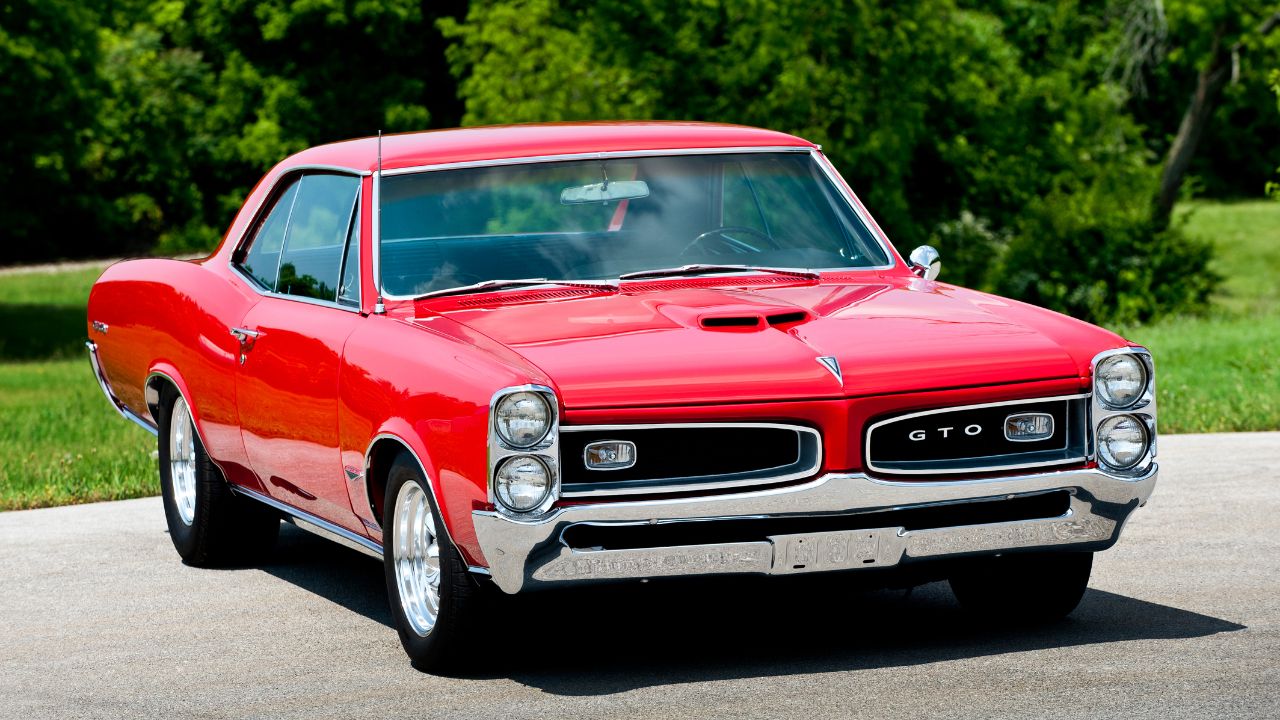
You probably think of the Dodge Charger when you think about 1971 cars. The 1971 Dodge Charger saw a redesign with a 115-inch rim, six coupes and three tops. It also had a much larger interior than either the Ford Torino, Chevy Chevelle, or the Ford Torino. Basic models came in slant six and 318ci engines. You could also choose the Hemi option. The SE and 500 versions were then called the SE, 500 and 500. These models had additional features like extra sound insulation, carpeting trunks, and woodgrain vinyl.
Chrysler's 1971 cars were equipped with tilt wheels and automatic headlights.
By 1971, the Chrysler lineup consisted of four-door sedans, two-door hardtops, and wagons. A majority of this line featured the C-body architectural and a sleek fuselage. Other improvements included more rear footroom and automatic headlights. Several models featured tilt wheel and automatic headlights. Chrysler also offered automatic transmissions that made driving more enjoyable.

Chrysler's 1971 cars came with automatic temperature controls
Automatic temperature control was first introduced on the Chrysler Imperial late in the 1967 model year. Although it was the first car in its class to have this feature, even the cheapest models included it on their options lists. It was also standard equipment on the Ford Thunderbird. Automatic climate control was made available to even the cheapest cars in the 1970s. The era's best cars had this feature, and the sidebar below lists the most popular models.
Ford's 1971 Mustang Mach 1 had partial-throttle Downshift
Mustang Mach I released a unique feature. Ford tested the part throttle downshift on the racetrack. The car's six speed transmission includes part-throttle downshifting. It allows you to accelerate while in an upshift. It is not present in the Mustang GT, but it was included in the Mach 1.
Dodge's 1971 cars featured a modified power steering system to improve road feel
In 1971, the company introduced a new body style called the Charger. The Coronet had been the base for this car since 1970. However, it was a disappointing success. It was a four door car with the 318 and 6 engine engines. The Dodge Coronet was replaced by the Charger. It is a fourdoor sedan and wagon. The Charger was popularized after it was redesigned in 1971.
GM's 1971 cars had Torsion-Quiet Ride
GM introduced the Torsion Quiet Ride system in 1971. It was designed to isolate the leaf springs and subframe from each other, reducing noise, vibration, and stiffness. The system was not perfect, particularly when cornering. Rick Ehrenberg is a Mopar expert and recommends retrofitting earlier suspension parts in order to increase performance, reduce noise, and improve handling. But what are the benefits of the Torsion-Quiet Ride system?

Ford's 1971 Mustang Mach 1 had a new 360 engine
1971 Ford Mustang Mach 1 (a sports car) was produced. It was made for the first time in 1969. It replaced the Mustang GT before it and featured a 360 motor. The Ford Mustang Mach 1 won many major races over its lifetime, including the North American Rally Championship. It also earned numerous awards for performance, including the coveted "Best of Show" honor.
FAQ
What qualifications are required to become a truck mechanic
Although you don't need to have any formal qualifications, your experience working with trucks and engines is invaluable. Your expertise is invaluable because you know how quickly and efficiently to diagnose problems.
A solid understanding of diesel technology is also a plus. This will help you understand the components that are needed to fix our vehicles.
How long does a good mechanic take?
It takes years of practice and experience to become an expert mechanic. A professional mechanic will teach you how to fix cars.
You will need to spend some time in a garage to learn as much about cars and mechanics as possible. You will need to read books on mechanical engineering and car design.
Furthermore, you'll need to enroll in auto school.
It's crucial to start as soon as possible. You don't have to wait until you are older to start studying automotive technology. You can get certified as a mechanic by getting started right away!
What are the requirements of an auto technician?
You must have completed high school or GED with good grades in maths and English. You also need to be able to read and write well. You will need to pass a written test and then go through a series of practical exams before being allowed to start work.
Does it matter where I go to college?
Not really. There are no differences between colleges when it comes to getting into the automotive industry. You will find that some schools offer better programs than others. If you are looking for something more specific, consider going to another school.
What length is an automotive course?
An automotive course is three years long.
The first year is spent learning about cars and theory. The second year will be spent in practical training. Here you will learn how fix engines, drive and other mechanic jobs. The last year is spent at a local shop, where you will get practical experience with real-world problems.
To work as an automotive mechanic, do I need a degree? Can I study part time?
Although it's not mandatory, a degree can help. Employers will prefer candidates who have completed a degree. This shows you have put in the work and achieved success.
But, this doesn't mean you have to stop working while studying. Some universities let students complete their coursework in the summer and then continue their studies during the school year. Others allow students to study part-time all year.
What is the best career for an automotive mechanic?
The automotive industry is full of exciting opportunities for those who are dedicated to excellence. It is important to work hard and learn as much from others as you can in order to succeed in this industry.
You'll need to have excellent communication skills because you'll spend most of your time talking to customers and other employees. You must also be willing and able to travel long distances, which can make it difficult to commute.
If you're interested in pursuing a career in automotive, consider taking classes at community colleges and universities. Many schools offer programs specific to students interested in sales, auto repair, or customer service.
If you decide to pursue a degree, you should study mechanical engineering. You can earn a bachelor's in as little four years.
Many companies will hire students straight out of college. You should start looking for employment as soon as you are able to continue your studies part-time.
After your education is complete, you will probably need some training in order to become an automotive technician.
This means that you will need to pass tests such as the Automotive Excellence (ASE) certification exam. This test covers engine maintenance and brakes as well as suspension.
Once you've passed the ASE test, you can apply for a license issued by the National Institute for Automotive Service Excellence.
Private individuals can have their vehicles repaired with a license. You will be compensated based on how many services you performed.
Not all states require licensing. You will need a license if you want to work in a different state.
Some states will not issue licenses until an individual has completed certain training. This could be you.
Statistics
- According to the BLS, the median annual salary for automotive service technicians and mechanics in the United States was $44,050 in May 2020. (uti.edu)
- The U.S. Bureau of Labor Statistics (BLS) reports that the job outlook for automotive service technicians and mechanics is expected to decline by 4% from 2019 to 2029. (indeed.com)
- 52% of Mechanics in the United States think their salaries are enough for the cost of living in their area. (indeed.com)
External Links
How To
How to become an Automotive Technician
An automotive technician performs repairs and maintains vehicles. He/she is employed at automobile dealerships, garages, service centres, and auto shops. He/she assists customers in fixing their cars, trucks or motorcycles. An automotive technician must be able to diagnose problems and make repairs quickly, safely, accurately, and efficiently.
To become an automotive technician, a person must first earn an associate's degree from a vocational college. After completing this program, he/she must pass the National Institute for Automotive Service Excellence (ASE) certification exam. ASE stands in for American Society of Mechanical Engineers. Two sections make up the ASE certification examination. The first section tests for mechanical knowledge, the second for practical skills. To pass the test you must go to one of the authorized testing facilities. These testing sites can be found online and through your local dealer.
Before becoming an automotive technician, a candidate must pass the test. It varies depending on the location of the applicant. Some states require that applicants attend a training class, while others allow them freedom to study at their own pace. Some states permit technicians to work immediately after they are granted their license. Others require them to wait at least six consecutive months before they can be licensed.
Apply to your local dealership to become an automotive technician. New employees are usually apprentices when they first get hired. Apprenticeship programs typically last three to four years. During this time, a student learns how to perform basic repairs, such as changing oil, adjusting brakes, replacing tires, cleaning spark plugs, inspecting engine compartments, and performing routine maintenance. Some students will learn advanced repair techniques, such as changing shocks, installing air filters, and replacing engines. Many schools offer classes during regular hours. Some schools also offer evening classes when needed.
After completing an apprenticeship, a student becomes a journeyman. Journeymen spend typically four to five years learning to install major systems such as transmissions and differentials, steering gear, suspensions and drive shafts. You will also learn how to repair complicated electrical components, as well as how to remanufacture engines and rebuild transmissions. Because they have the experience and knowledge to do the job right, employers love hiring journeymen.
After passing the exams, candidates may be eligible to open their own shop if they pass all requirements. According to the Bureau of Labor Statistics, nearly 1.7 million automotive mechanic jobs were available in 2010. This number is expected to increase by 18% between 2009 and 2020. The candidate should expect to invest thousands of money in equipment and supplies if he/she decides to start his/her shop.
Automotive technicians' salaries depend on many factors such as the employer, whereabouts, education level and experience. On average, a jobless person could expect to earn $20,000 annually. Someone with only a high school diploma could earn around $21,000 per year. Earnings for those with an associate's diploma are approximately $24,000/year. A technician with a bachelor's degree earned approximately $27,000 annually. Masters' degree holders earn around $32,000 per annum. A common trend is for salary increases to occur so a professional making less than $30,000 can reasonably expect to be earning $40,000 or more within a few years.